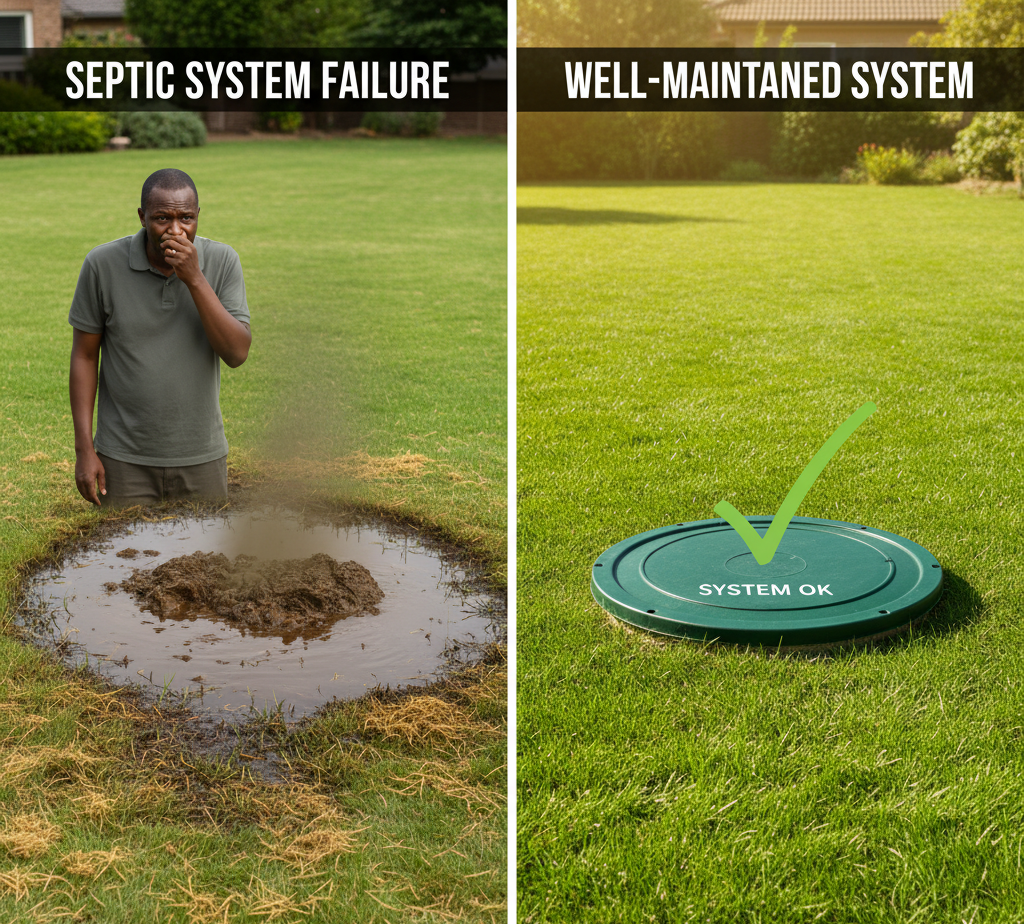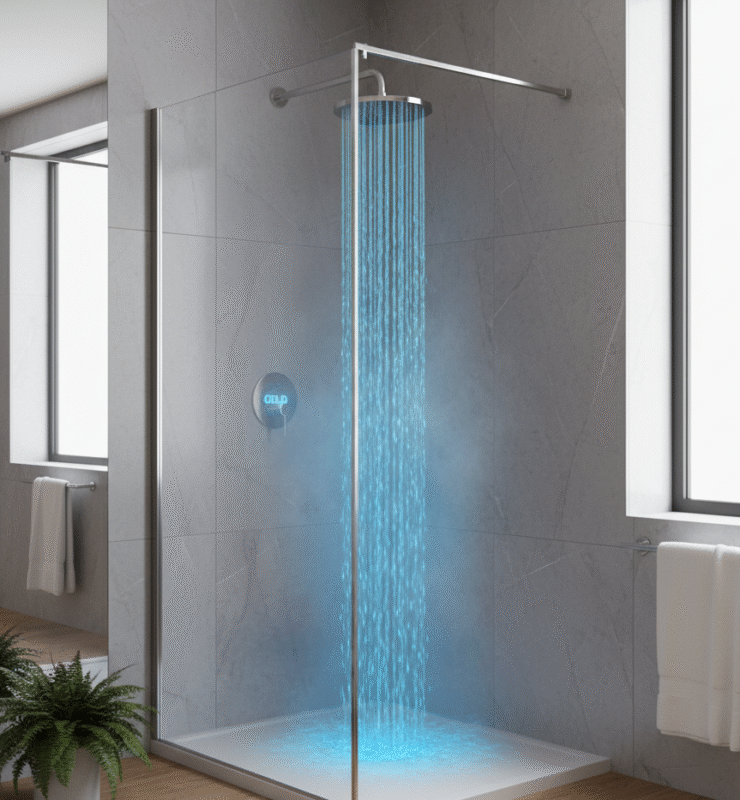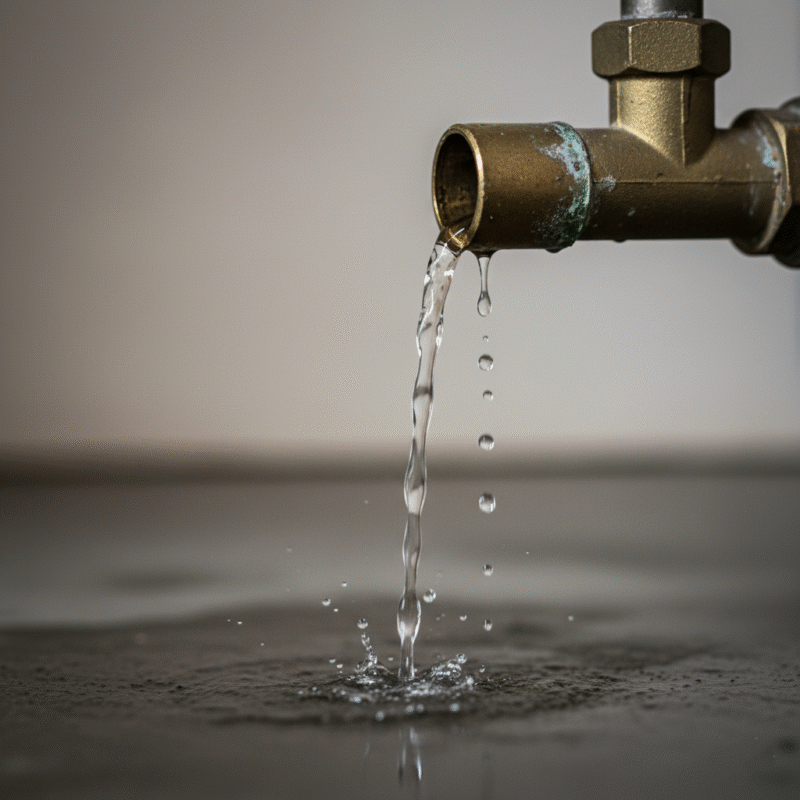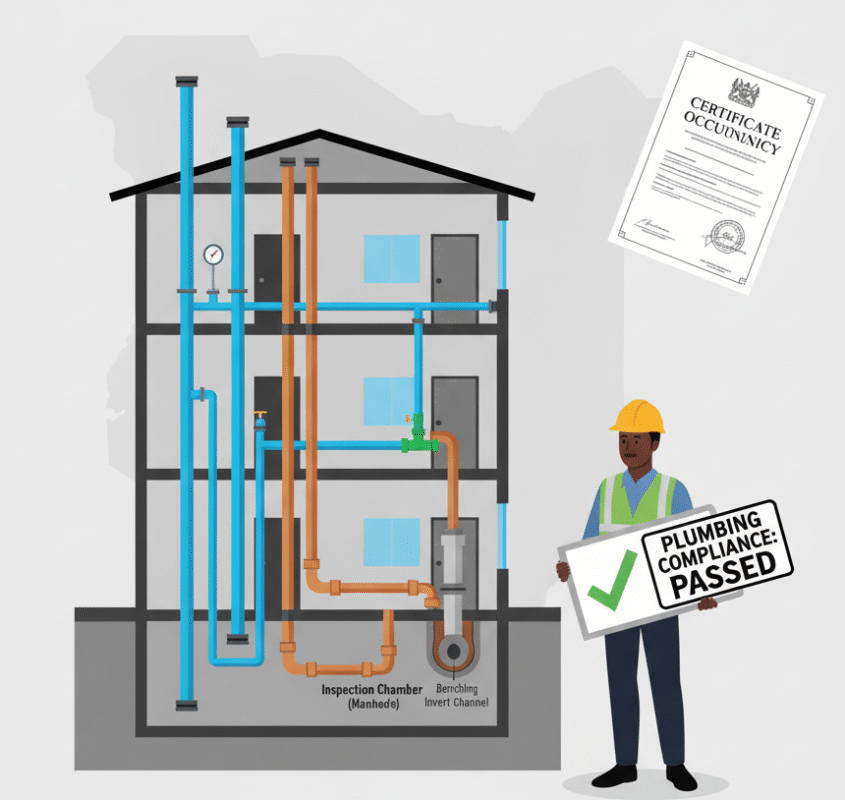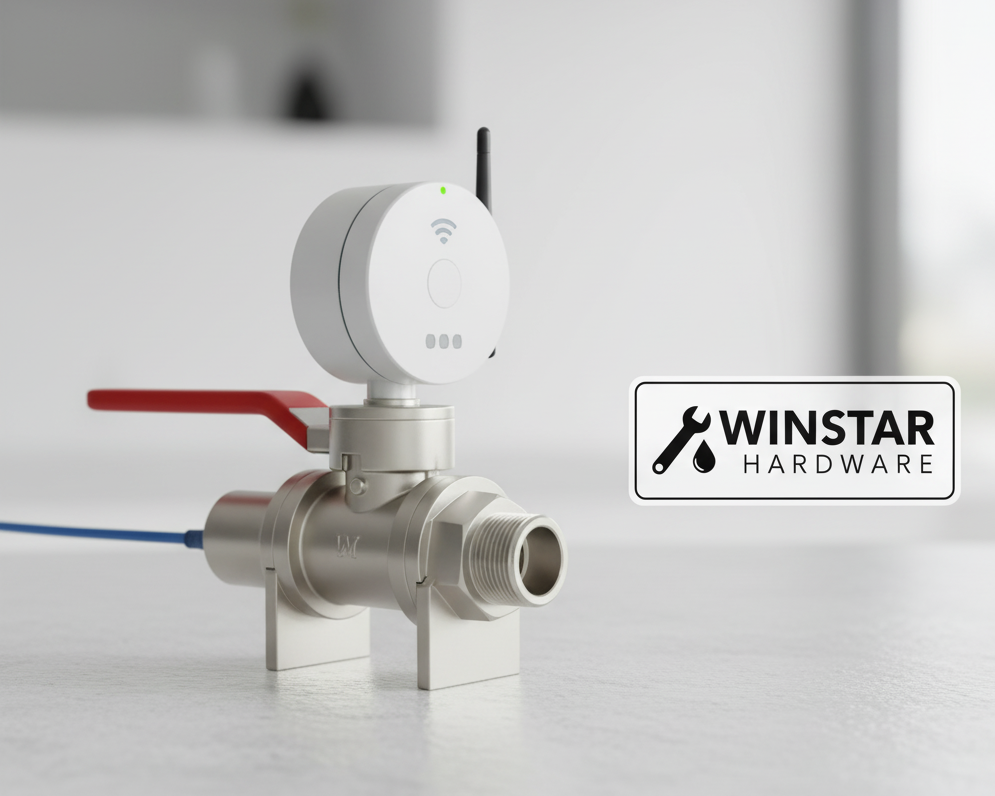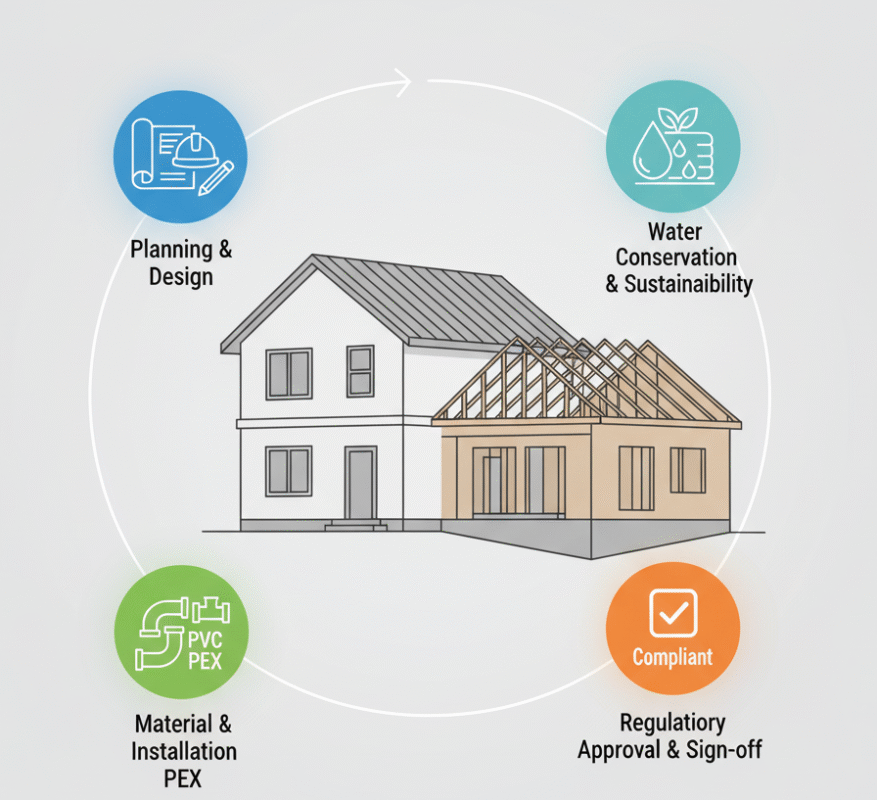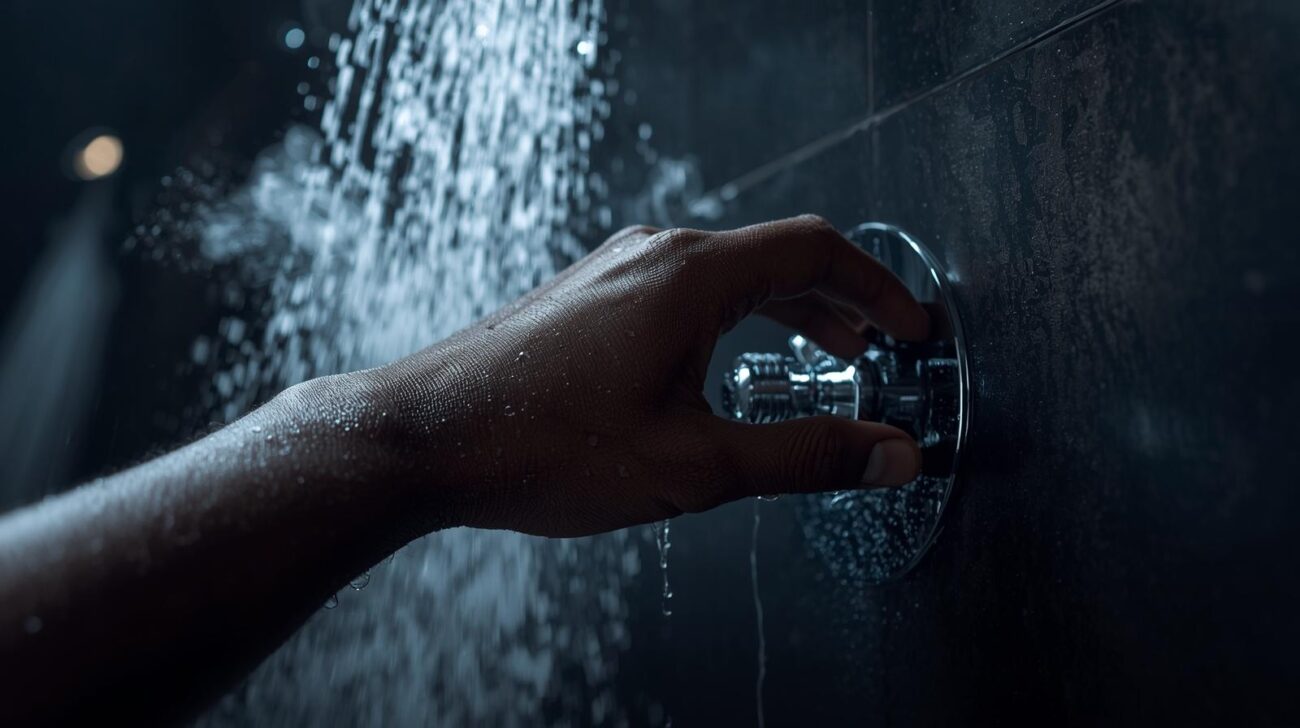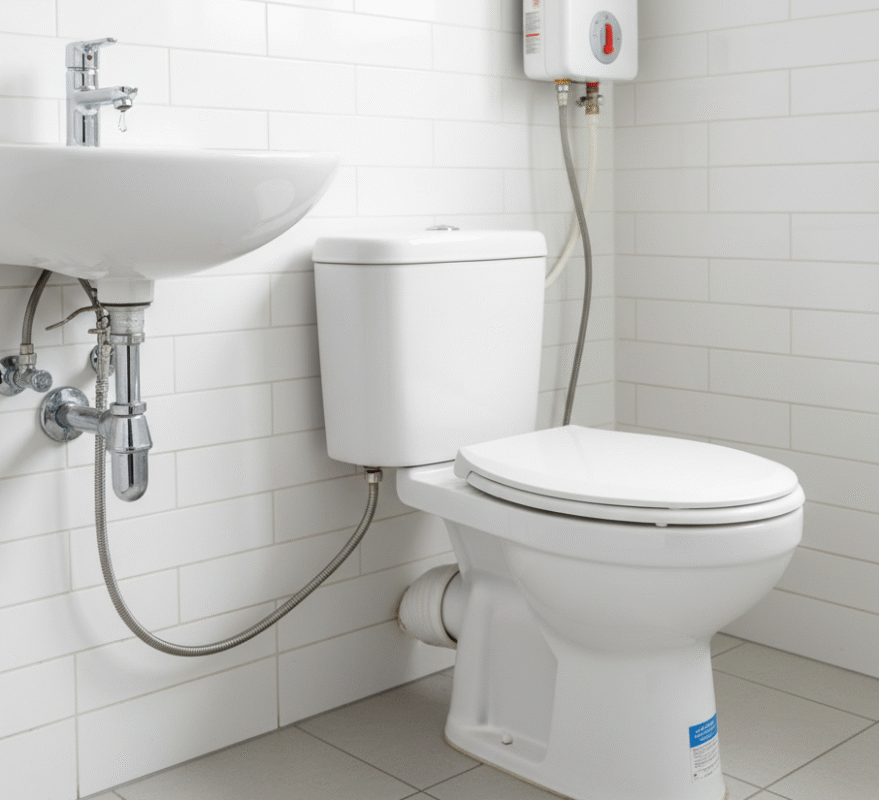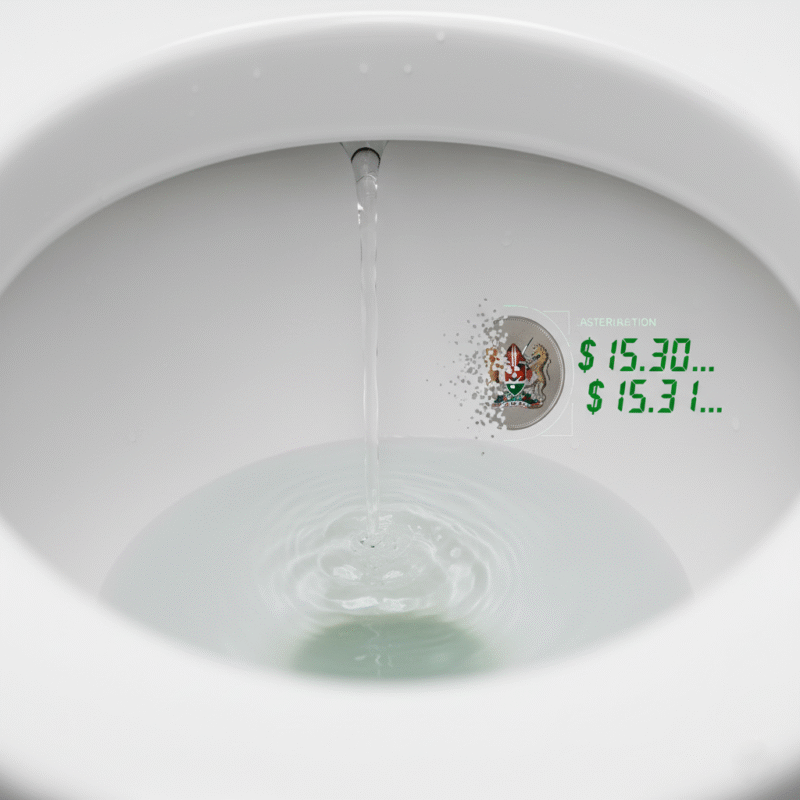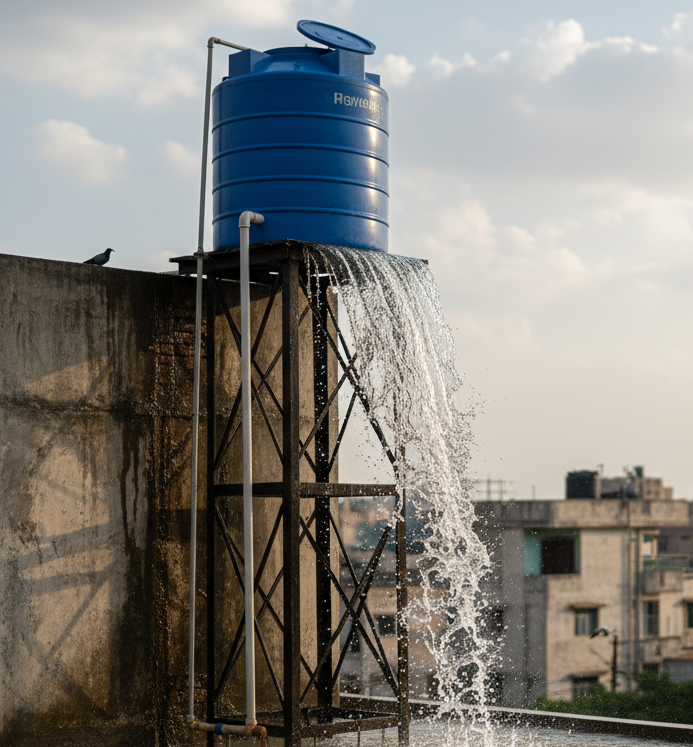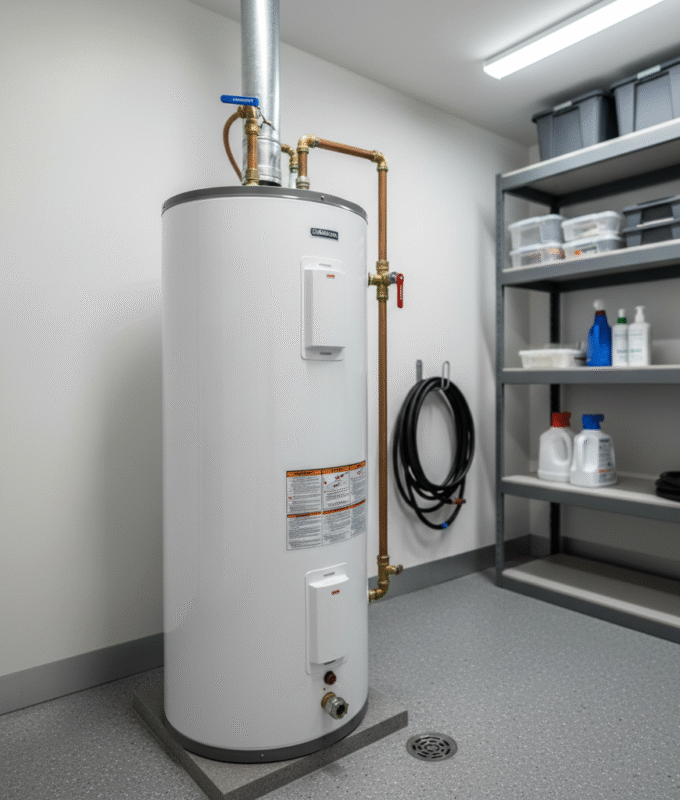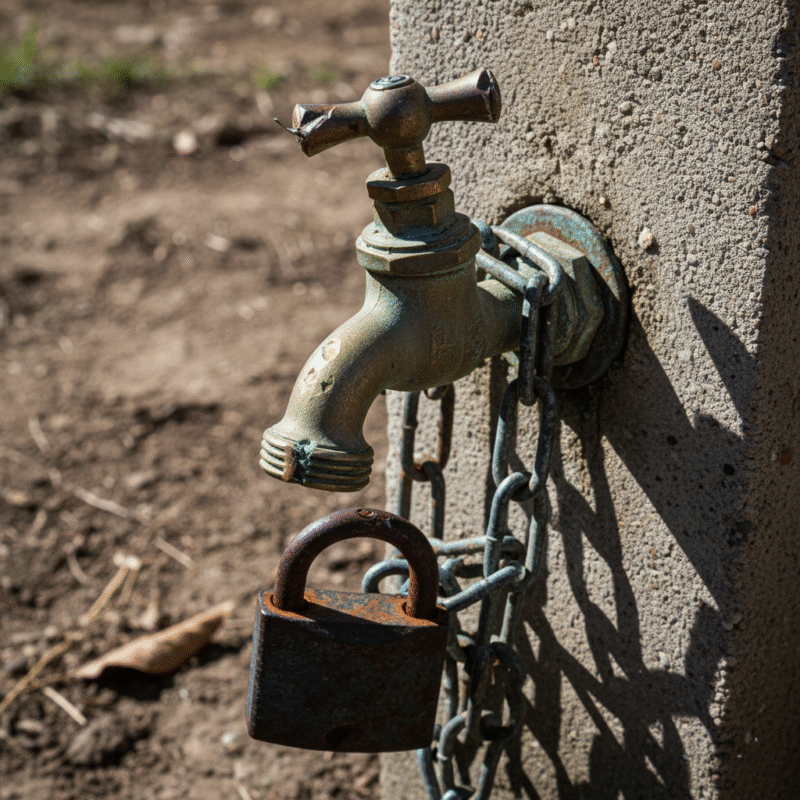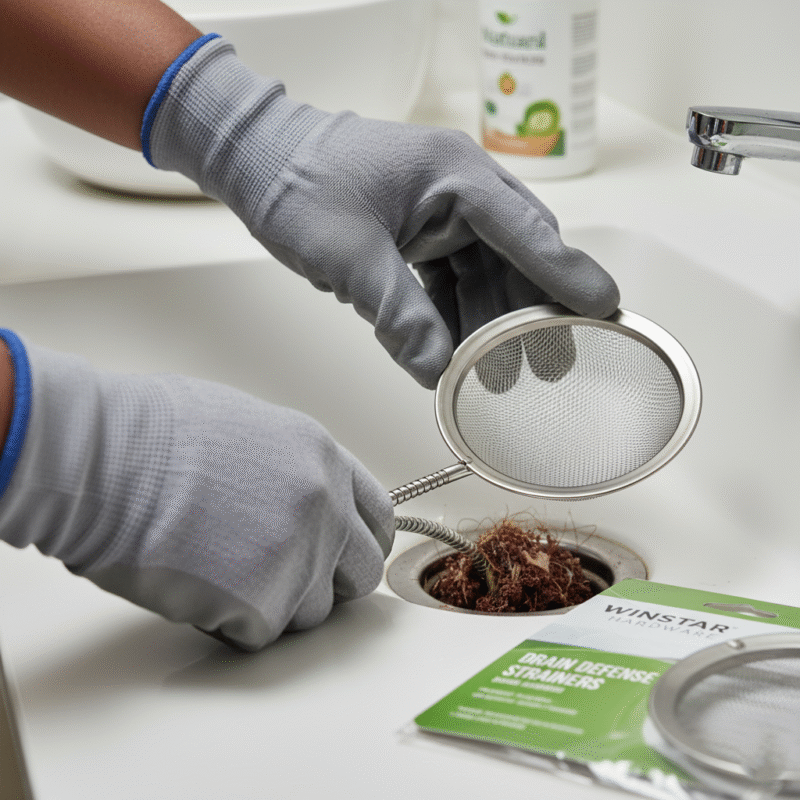For many Kenyan homes outside the main sewer lines—from rural areas to peri-urban estates—the septic system is an essential, silent workhorse. It diligently processes all your household wastewater, protecting your family’s health and the environment. However, this critical system is often neglected. For too many homeowners, the septic tank remains out of sight and out of mind until the unmistakable stench hits, drains back up, or raw sewage surfaces in the yard. These disasters are clear signs of impending septic system failure, which can lead to devastating health risks and exorbitantly costly septic repairs that are easily avoided through regular septic tank maintenance.
At Winstar Hardware, we know that a properly maintained system equals peace of mind. That’s why we created “The Essential Guide to Septic Tank Maintenance & Pumping.” This comprehensive resource will empower you with the knowledge and septic system care practices needed to ensure your system runs smoothly, efficiently, and without the catastrophic breakdowns that can drain your wallet and endanger your property. Embrace proactive septic tank maintenance today and stop septic failure before it even begins.
The Alarming Reality of Septic System Failure in Kenya
Neglecting septic tank maintenance is a gamble with extremely high stakes. For Kenyan homeowners, the consequences of a failing septic system are particularly stark:
Environmental Contamination:
Untreated wastewater contains harmful bacteria, viruses, and nutrients. A failing septic system can contaminate groundwater (a vital source of drinking water in many parts of Kenya), local streams, and even surface soil, posing severe public health risks.
Exorbitant Repair Costs:
Replacing a drainfield or repairing a severely damaged septic tank can easily cost hundreds of thousands of shillings. These are often emergency repairs, compounding the financial strain. Learning how to avoid costly septic repairs is paramount.
Property Devaluation:
A history of septic system failure can significantly reduce your property’s value and make it difficult to sell. No prospective buyer wants to inherit a sanitation nightmare.
Unpleasant Odours and Health Hazards:
Backed-up sewage, foul odours, and soggy ground filled with wastewater create unbearable living conditions and are a breeding ground for disease-carrying pests.
Water Scarcity Impact:
While not a direct water waste, a failing system often requires extensive use of fresh water for flushing and clean-up, further stressing water resources.
The message is clear: regular septic tank maintenance isn’t just a recommendation; it’s an absolute necessity.
Understanding Your Septic System: The Basics
Before we dive into septic tank maintenance, it’s crucial to understand how a typical septic system works. While designs can vary, especially with older systems versus modern bio-digesters becoming more common in Kenya, the fundamental principles remain the same.
Key Components of a Conventional Septic System:
- Septic Tank: This is a watertight container (usually concrete, fiberglass, or plastic) buried underground. All wastewater from your home (toilets, sinks, showers, washing machine) flows into it.
- Functions:
- Separation: Solids (sludge) settle at the bottom, and lighter materials like grease and oils (scum) float to the top.
- Partial Treatment: Naturally occurring bacteria in the tank begin to break down some of the organic matter.
- Effluent Outlet: The clarified liquid (effluent) then flows out into the drainfield.
- Functions:
- Drainfield (Leach Field or Absorption Field): This is a series of trenches or a bed containing gravel and perforated pipes. The effluent from the septic tank flows into these pipes, slowly seeping into the surrounding soil.
- Functions:
- Final Treatment: The soil acts as a natural filter, further treating the wastewater by removing pathogens and impurities before it percolates into the groundwater.
- Distribution: Spreads the effluent over a large area for effective absorption.
- Functions:
- Soil: The type of soil (sand, clay, loam) plays a critical role in how well the drainfield absorbs and treats wastewater. Proper site assessment is crucial during installation.
- Inlet and Outlet Pipes: These transport wastewater to and from the septic tank.
- Access Risers/Lids: For inspection and septic tank pumping.
Understanding these components helps you grasp why proper septic tank maintenance is so vital.
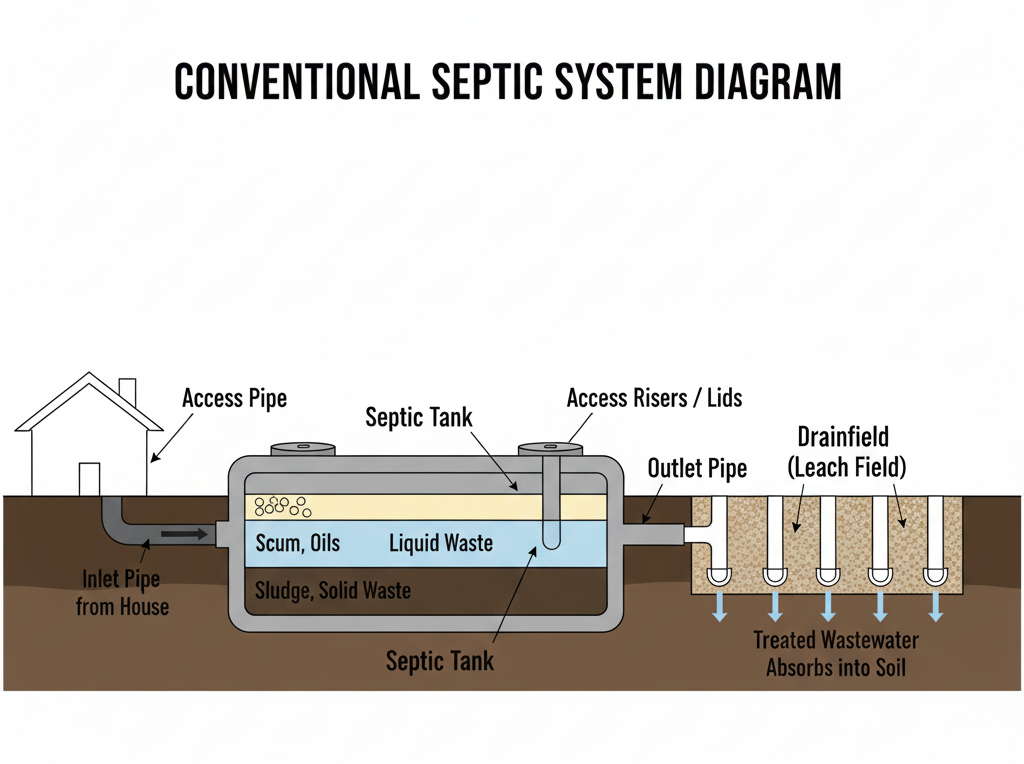
The Golden Rule: Regular Septic Tank Pumping
If there’s one piece of advice that underpins all effective septic tank maintenance, it’s regular pumping. This is not optional; it’s the single most crucial step to prevent septic system failure.
Why is Septic Tank Pumping So Important?
As wastewater enters your septic tank, solids settle at the bottom (forming sludge), and fats/oils float to the top (forming scum). The middle layer is effluent that flows to the drainfield.
- Prevents Sludge Buildup: Over time, the sludge layer at the bottom accumulates. If it gets too thick, it can get pushed out into the drainfield.
- Protects the Drainfield: The drainfield is the most expensive part of your septic system to replace. When solids (sludge) enter the drainfield, they clog the perforations in the pipes and eventually the soil itself. Once the soil is clogged, it loses its ability to absorb and treat wastewater, leading to septic system failure – evidenced by soggy ground, foul odours, and backups.
- Ensures System Efficiency: Pumping removes the non-degradable solids, allowing the beneficial bacteria in the tank to work more efficiently on the remaining waste.
How Often Should You Pump Your Septic Tank? (Factors Influencing Frequency)
The frequency of septic tank pumping varies based on several factors unique to Kenyan households:
- Household Size: More people mean more wastewater and more solids entering the tank.
- Small household (1-2 people): Every 3-5 years.
- Medium household (3-5 people): Every 2-3 years.
- Large household (6+ people): Annually or every 1-2 years.
- Septic Tank Size: A larger tank can hold more solids, allowing for longer intervals between pumping. (However, most Kenyan tanks are sized based on typical family usage).
- Wastewater Generation: Homes with efficient fixtures (low-flow toilets, water-saving showerheads) generate less wastewater, which can slightly extend pumping intervals. Conversely, heavy water users might need more frequent pumping.
- Presence of Garbage Disposal: Homes with garbage disposals (less common in Kenya but present) add significant solids to the tank, requiring more frequent pumping (annually).
- Usage of Harsh Chemicals: Excessive use of bleach, strong detergents, or antibacterial products can kill beneficial bacteria, slowing down the natural breakdown of solids and potentially requiring more frequent pumping.
- Inspection Results: A professional septic tank inspection will measure the sludge and scum layers. If these layers are too thick, pumping is required regardless of the last date.
General Recommendation for Kenya:
Given the diverse usage patterns and often smaller tank sizes compared to Western standards, most Kenyan households should aim for septic tank pumping every 2-3 years. For larger families or those with very active wastewater generation, an annual check or pump is a safer bet. This proactive approach is the best way to avoid costly septic repairs.
Keep a record of your septic tank pumping dates. This helps you track the frequency and provides valuable data for your plumber during septic system care.
What You Put Down the Drain Matters – Protecting Your System
Your septic tank is a delicate ecosystem. What goes down your drains directly impacts its health and efficiency. Practicing mindful disposal is one of the most effective septic tank maintenance strategies.
The Septic-Safe Disposal List: Do’s and Don’ts
Remember the three P’s: Pee, Poo, and Paper (toilet paper only!). Anything else can disrupt the bacterial balance or clog your system, leading to septic system failure.
| DO’S (Septic-Friendly) | DON’TS (Septic Hazards) |
| Toilet Paper: Only biodegradable toilet paper. | Grease, Fats, Oils (GFO): Solidifies, clogs pipes, smothers bacteria. |
| Human Waste: Urine and faeces. | “Flushable” Wipes & Paper Towels: Don’t break down, cause massive clogs. |
| Water: Moderate amounts for flushing. | Chemical Drain Cleaners: Kill beneficial bacteria, harm pipes. |
| Biodegradable Soaps/Detergents: In moderation. | Harsh Chemicals: Bleach, paint thinners, pesticides, strong acids. |
| Diapers, Sanitary Products, Cotton Swabs: Indestructible in septic. | |
| Coffee Grounds, Eggshells, Food Scraps: Overload solids, don’t break down. | |
| Medications (Expired): Can harm bacteria, pollute groundwater. | |
| Kitty Litter: Clay-based or clumping litter is detrimental. |
Managing Kitchen Waste – A Major Culprit
The kitchen is often the source of most septic system problems.
- Grease and Oil Disposal: Collect all cooking oil and grease in old cans or bottles and dispose of it with solid waste. Never pour it down the sink, especially in warmer Kenyan climates where it can still congeal in cooler pipes underground. This is crucial septic system care.
- Food Scraps: Avoid using garbage disposals if you have a septic system (or use them very sparingly). Even if you have one, scrape all food waste into the rubbish bin or a compost heap before washing dishes. This significantly reduces the solid load on your tank, helping you avoid costly septic repairs.
- Drain Strainers: Install strainers in all your kitchen sinks to catch food particles.
Bathroom Habits for a Healthy Septic System
- Toilet Paper Only: Educate everyone in the household that only toilet paper should be flushed. Even products labelled “septic-safe” or “flushable” often cause issues.
- Hair Traps: Use hair traps in shower drains to prevent hair from entering the system. Hair combines with soap scum to form stubborn clogs that can eventually affect the septic tank’s inlet pipe.
Water Conservation – Less In, Less Out
The more water you put into your septic system, the harder it has to work. Excessive water can flood your drainfield, preventing it from adequately treating wastewater and leading to premature septic system failure. Implementing water conservation measures is an indirect but powerful form of septic tank maintenance.
Fix All Leaks Immediately
- Dripping Taps and Leaky Toilets: A constantly cistern leaking toilet can add hundreds or even thousands of litres of extra water to your septic system every day. This unnecessary water overloads the tank and drainfield. Refer to our blog, “Why Is My Cistern Leaking?“, for detailed DIY fixes.
- Leaky Pipes: Address any leaking pipes under sinks or in walls immediately. Every drip is extra water needlessly entering your septic system.
Install Water-Saving Fixtures
- Low-Flow Showerheads and Aerators: These fixtures significantly reduce the amount of water used in bathrooms and kitchens without compromising pressure, reducing the overall load on your septic system.
- Dual-Flush Toilets: If you’re replacing toilets, choose dual-flush models that use less water for liquid waste.
- Efficient Appliances: When purchasing new washing machines or dishwashers, look for “water-efficient” models. They use significantly less water per cycle.
Smart Water Usage Habits
- Stagger Laundry Loads: Avoid doing all your laundry on one day. Spreading out your water-heavy activities gives your septic tank and drainfield time to process the wastewater effectively.
- Shorter Showers: Encourage shorter showers instead of long ones or baths.
- Full Loads Only: Only run washing machines and dishwashers when they are full.
We have a wide selection of water-saving fixtures, including low-flow showerheads, tap aerators, and repair kits for leaky cisterns. Investing in these items is a fantastic cost-effective plumbing tip that benefits both your water bill and your septic system’s lifespan.
Protecting Your Drainfield
The drainfield is the most vulnerable and expensive part of your septic system. Protecting it from physical damage and hydraulic overload is paramount to septic system care.
What NOT to Do Over Your Drainfield
- No Heavy Vehicles or Equipment: Never drive or park cars, trucks, heavy machinery, or even motorbikes over your drainfield. The weight can crush the pipes or compact the soil, leading to immediate septic system failure.
- No Structures: Do not build sheds, decks, patios, driveways, or swimming pools over any part of your septic tank or drainfield.
- Tree Roots: Plant trees and shrubs at a safe distance from your drainfield and septic tank. Tree roots are highly invasive and will seek out moisture, often infiltrating and clogging the drainfield pipes, causing severe damage. Consult a landscape professional for appropriate planting distances.
- Divert Surface Water: Ensure gutters and downspouts drain away from your drainfield. Excessive surface water can saturate the soil, preventing it from absorbing wastewater from the septic system.
Proper Landscaping Over the Drainfield
- Grass is Best: The best cover for a drainfield is a healthy layer of grass. Its shallow roots help prevent soil erosion without being invasive.
- Avoid Deep-Rooted Plants: Do not plant deep-rooted shrubs, vegetables, or trees directly over the drainfield.
- No Impervious Surfaces: Avoid placing plastic sheeting, concrete, or other impervious materials over the drainfield, as this prevents proper evaporation and oxygen exchange vital for the soil’s treatment process.
If you’re unsure of your drainfield’s exact location, a professional septic tank inspection can map it out for you. Proper landscaping is a subtle yet effective cost-effective plumbing tip for preventing future damage.
The Annual Septic Tank Inspection
Even with diligent daily care and regular pumping, a professional septic tank inspection is invaluable. This is not just about pumping; it’s about a thorough evaluation of the entire system’s health.
What a Professional Inspection Entails
A qualified septic professional, when performing septic tank maintenance, will typically:
- Locate Access Points: Uncover the tank’s access risers/lids.
- Measure Sludge & Scum Layers: Determine if the tank needs pumping based on accumulation, not just elapsed time.
- Inspect Inlet & Outlet Baffles: Check for damage or blockages in these critical components that control flow to and from the tank. Damaged baffles can allow solids into the drainfield.
- Check for Leaks: Examine the tank itself for cracks or leaks.
- Assess Drainfield Condition: Look for signs of septic system failure in the drainfield, such as pooling water, lush green patches (indicating nutrient-rich effluent), or foul odours.
- Evaluate Pumping Needs: Advise on the appropriate septic tank pumping schedule based on the inspection.
- Provide Recommendations: Offer advice on general septic system care and any necessary repairs.
Why Not to Skip Inspections
- Early Problem Detection: An inspection can catch minor issues (like a damaged baffle) before they escalate into major, costly septic repairs.
- Optimized Pumping Schedule: It helps fine-tune your septic tank pumping schedule, ensuring you pump when necessary, not just on an arbitrary timetable.
- Peace of Mind: Knowing your system is healthy prevents unpleasant surprises.
- Compliance: Some local regulations or property transactions may require documented inspections.
Winstar Hardware Tip: While we provide parts for many DIY plumbing fixes, finding a reputable, licensed septic professional for inspections and pumping is crucial. Ask for references and ensure they provide a detailed report of their findings. This expert oversight is a smart cost-effective plumbing tip.
Checklist for annual septic system homeowner checks.
| Item to Check | Frequency | What to Look/Listen For | Action If Problem Found |
| All Drains | Monthly | Slow drainage, gurgling, odours | Plunge, use baking soda/vinegar, call pro for persistent |
| Toilet Dye Test | Quarterly | Coloured water in bowl | Repair/replace flapper |
| Septic Tank Area | Monthly | Foul odours, soggy ground, lush grass | Call septic professional |
| Pump Alarm (if present) | Monthly | Alarm sounding | Call septic professional |
| Water Meter Test | Quarterly | Meter moving when no water used | Investigate internal leaks or call pro |
| Outdoor Taps/Pipes | Quarterly | Drips, cracks, signs of vandalism | Repair/replace parts |
| Water Heater Area | Annually | Leaks, rust, sediment noise | Flush, inspect T&P valve |
Troubleshooting Common Septic Problems (and When to Call a Pro)
Even with the best septic tank maintenance, problems can arise. Knowing how to interpret the signs and when to take action is critical to avoid costly septic repairs.
Common Signs of Septic System Failure
- Slow Drains or Backups: This is often the first sign. All drains (sinks, showers, toilets) might drain slowly, or sewage might back up into plumbing fixtures.
- Foul Odours: Unpleasant odours emanating from drains, around the septic tank, or in the drainfield area.
- Soggy Ground or Pooling Water: Patches of unusually lush, green grass, or standing water (especially after rain) over the drainfield indicate that effluent isn’t being absorbed.
- Gurgling Sounds: From your plumbing fixtures or pipes, often indicating air being trapped or a blockage.
- Nitrate Contamination: If you have a well, a sudden increase in nitrate levels in your well water can indicate septic contamination (requires testing).
DIY Troubleshooting vs. Professional Intervention
- DIY First Aid (Minor Issues):
- Minor Clogs: Use a plunger or a basic drain snake for isolated slow drains.
- Toilet Leaks: Fix a cistern leaking toilet flapper.
- Water Conservation: Immediately reduce water usage to lighten the load on the system if you suspect an issue.
- When to Call a Professional (Major Issues):
- Multiple Slow/Backed-up Drains: If all your drains are slow or backing up, this usually points to a main line clog or a major septic system failure.
- Foul Odours / Standing Water in Yard: These are definite signs of drainfield or tank problems.
- Pump Alarm: If your septic system has a pump and the alarm goes off.
- Suspected Inlet/Outlet Baffle Damage: Requires tank entry.
- Unknown Problem: If you’ve tried basic troubleshooting and the problem persists, or you’re unsure of the cause.
For DIY drain cleaning, we have various plungers and drain snakes. However, be cautious with chemical drain cleaners, as they can kill the beneficial bacteria in your septic tank and exacerbate problems.
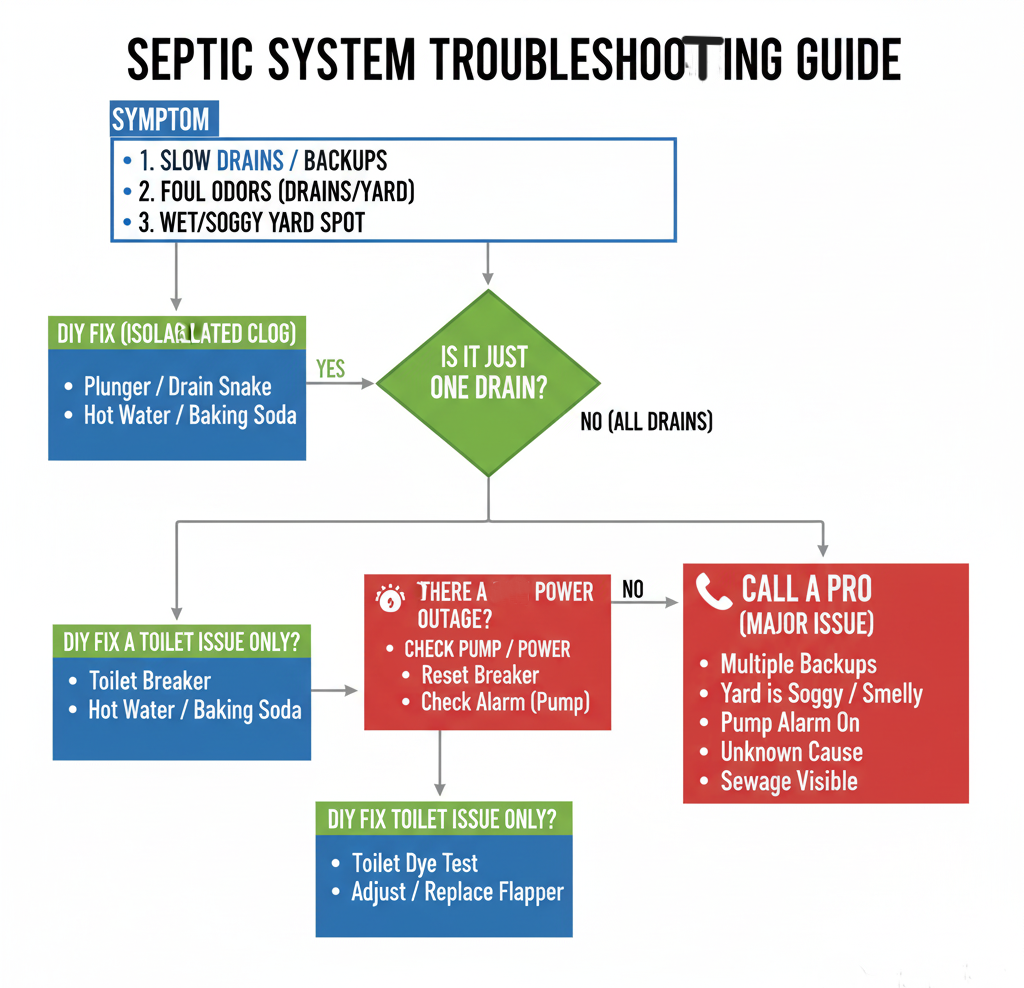
Conclusion: Your Partner in Preventing Septic System Failure
Maintaining a healthy septic system is a crucial aspect of responsible homeownership in Kenya. By embracing proactive septic tank maintenance & pumping, you’re not just avoiding unsightly and unhealthy sewage backups; you’re safeguarding your family’s health, protecting the environment, and making a significant long-term cost-effective plumbing tip for your property. The small effort and investment in regular septic system care can save you from the massive financial burden and stress of a full-blown septic system failure.
At Winstar Hardware, we are committed to empowering you with the knowledge and the right tools. From durable drain strainers and water-saving fixtures to essential plumbing parts that support a healthy septic environment, we have everything you need to implement these vital septic tank maintenance strategies. Our knowledgeable team is always ready to assist you in selecting the best products for your home’s unique needs.
Don’t let your septic system become an invisible ticking time bomb. Take control, apply these essential septic tank maintenance practices, and enjoy the peace of mind that comes with a healthy, efficient, and trouble-free sanitation system.
Visit Winstar Hardware today – your partner in sustainable and cost-effective home maintenance!


